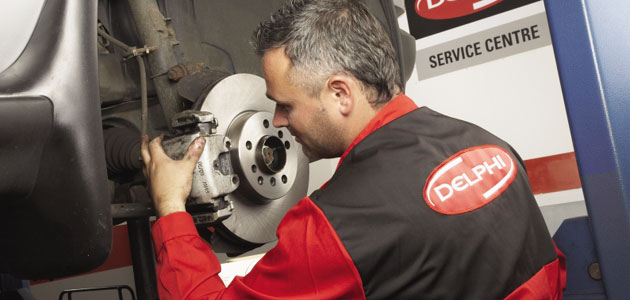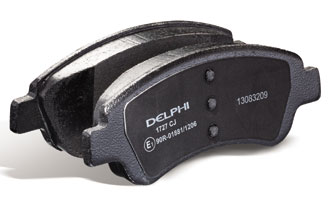
When performing a braking service, Delphi strongly recommends that technicians fit new braking accessories with every fitment. By replacing accessory kits when changing brake pads, you help ensure a complete high quality brake repair, a reduction in potential warranty claims, a reduction in brake noise, increased customer safety, as well as a brake repair identical to OE service.
Used accessory components may appear to be in good condition, however, they will undoubtedly have reduced tension and function as these parts are exposed to rain, moisture and salt corrosion, and – in most climates – extreme temperature conditions. Not replacing these components could lead to unequal braking and therefore potentially cause a reduction in stability and safety, as well as an increased wear on pads and discs, resulting in pad vibration and increased brake noise.
While Delphi recommends mechanics to change pads and fitting accessories at the same time, the current sales results show that only one kit is sold per 25 sets of pads. With the price of an accessory kit at only 3-6% of the total cost of brake disc and pad repair, don’t skip this all-important step when performing a braking service.

Replacing brake pads
Just as electronics are revolutionising the way cars operate, they will also revolutionise the way cars are serviced and repaired. A visual check and good working knowledge of the system is no longer enough. Without an electronic diagnostic tool, the operation could take much longer, be less safe or even impossible. For example, during repair there is a possibility that even manually servicing the vehicle could confuse the control system, resulting in fault codes.
Electric handbrake systems, for example, which have been standard on an increasing number of cars, must have their electronic control units engaged while winding back the calipers so the pad position is indexed. This is essential when replacing brake pads, as the control unit needs to know the thickness of the pads in order to engage correctly.
ABS Sensors – What are they?
Anti-lock Braking System (ABS) speed sensors magnetically read the rotational speed of each wheel, which is fed back to the vehicle’s electronic control unit (ECU). When a wheel is starting to lock up and/or skid, the ABS System intervenes to gradually release and re-apply the brake many times per second to help ensure maximum braking efficiency and directional control can be maintained. If an ABS sensor fails, the car reverts to normal braking with no potential for ABS monitoring or modulation of pressure when a wheel, or wheels, lock up in a braking situation. Without ABS, a wheel will automatically lock up in slippery and/or gravel-like conditions, as well as potentially experiencing a loss of directional control and vehicle stability.









